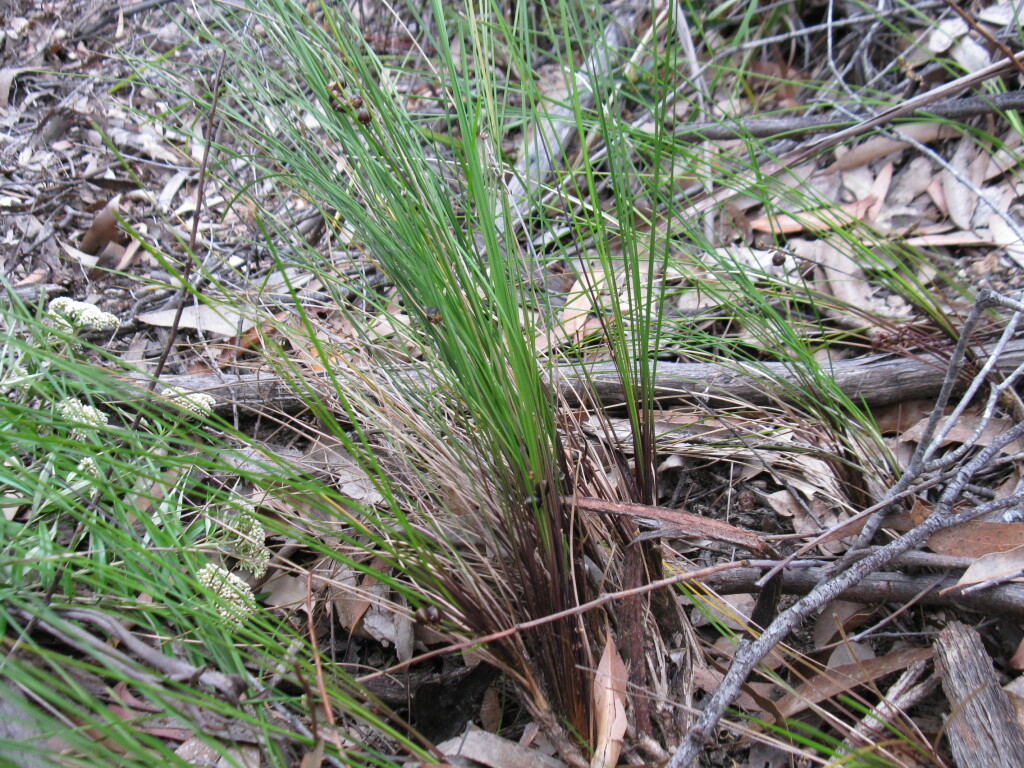Lomandra confertifolia subsp. leptostachya
A.T.LeeTussocks usually slender. Leaves channelled with margin incurved, (21–)30–70cm long, 0.5–1.5 mm wide, green; basal sheath gradually tapering distally, readily torn and appearing like a lattice, pale brown or whitish; apex subtruncate with 2 or 3 small points. Male and female inflorescences similar, with several few-flowered clusters on unbranched or shortly branched axes, (8–)15–60cm long, c. one- to three-quarters as long as the leaves; non-flowering axis exposed for 5–50 cm; flower-bearing axis (1.5–)4–6(–10)cm long. Bracts brown or pale brown. Flowers with outer perianth purple and inner perianth yellow. Flowers Aug.–Nov.
EGL, EGU, HSF, MonT, HFE, VAlp. An uncommon species of dryish open-forests, usually on granite-derived soils.
Lee (1962) recognized 5 subspecies, of which only subsp. leptostachya occurs in Victoria. Subsp. leptostachya differs from the other 4 subspecies in having a combination of the following characters: stem usually elongated and relatively stout (old part of stem 4.5 mm diam. or more), leaves more than 20 cm long and non-flowering axis usually much longer than flower-bearing part of axis.
Conn, B.J. (1994). Xanthorrhoeaceae. In: Walsh, N.G.; Entwisle, T.J., Flora of Victoria Vol. 2, Ferns and Allied Plants, Conifers and Monocotyledons, pp. 720–734. Inkata Press, Melbourne.
 Spinning
Spinning

